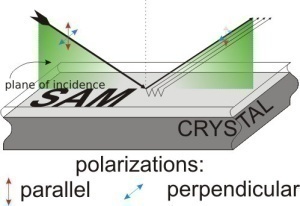Ellipsometry
Ellipsometry is an optical technique used to investigate thin films’ dielectric properties (complex refractive index or dielectric function).
Ellipsometry has many different applications. It can be used in semiconductor physics, microelectronics, biology, basic research, and industrial applications. This measurement technique’s sensitivity gives it an unequaled ability for measuring thin film.
When analyzing the polarization of light, ellipsometry provides information about layers that are much thinner than probing light’s wavelength. It can even go down to a single atomic layer and can also probe the refractive index and/or dielectric function tensor. This allows scientists to gain insight into physical parameters.
Advantages of Ellipsometry
Ellipsometry has many advantages that standard reflection intensity measurements do not. As a result, ellipsometry is now used in various fields. Its advantages are as follows:
1. It measures at least two parameters at every wavelength of the spectrum. That means that up to 16 parameters can be measured at every wavelength.
2. It measures the intensity ratio rather than just pure intensities. This means that the light source’s intensity instabilities do not affect it as much.
3. It does not need a reference measurement.
4. Real and imaginary parts of the dielectric function can be extracted without performing a Kramers-Kronig analysis.
5. It is incredibly superior to reflectivity measurements when scientists are studying anisotropic samples.
Material Characteristics Sensitivities
Ellipsometry is sensitive to many material characteristics. This allows researchers to get more than they normally would done with other techniques. Some of these characteristics include:
• Layer thickness
• Optical constants
• Surface roughness
• Composition
• Optical anisotropy


Comments - No Responses to “Ellipsometry”
Sorry but comments are closed at this time.